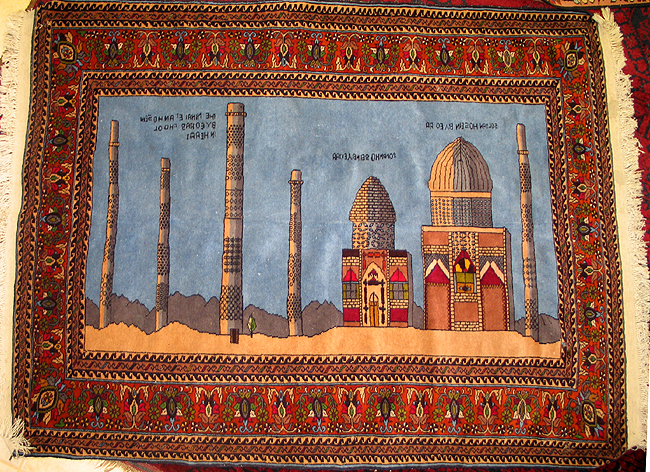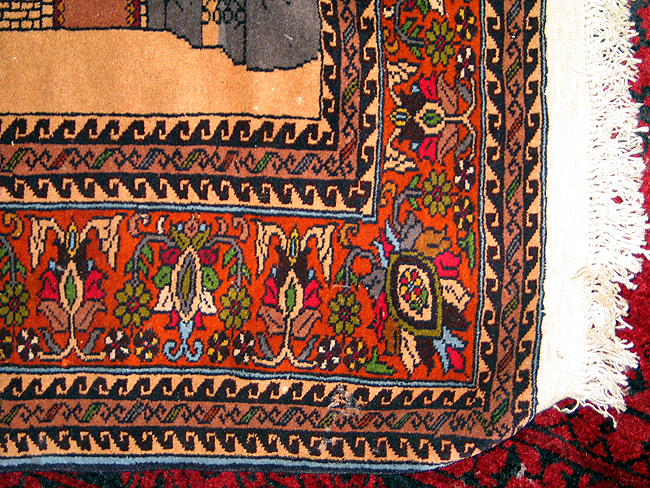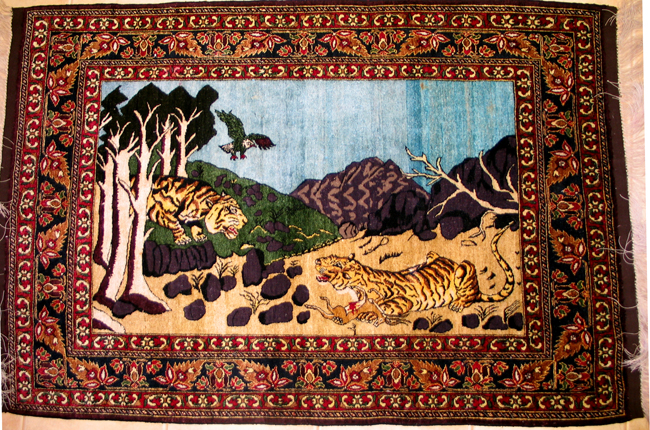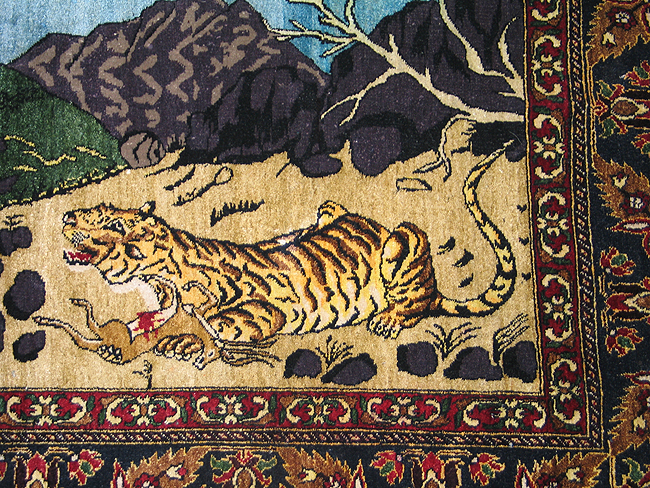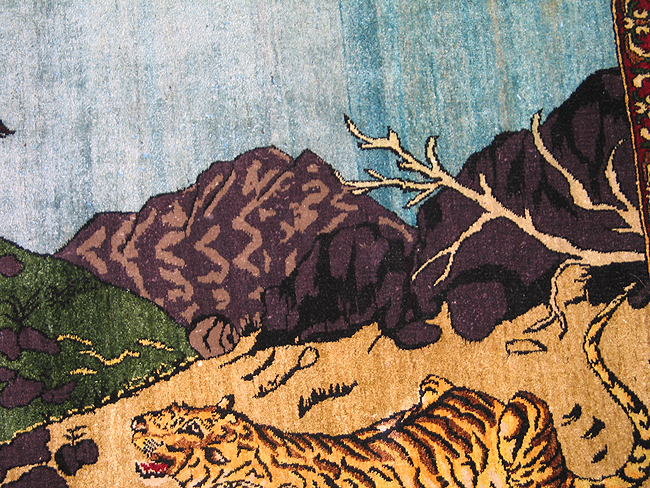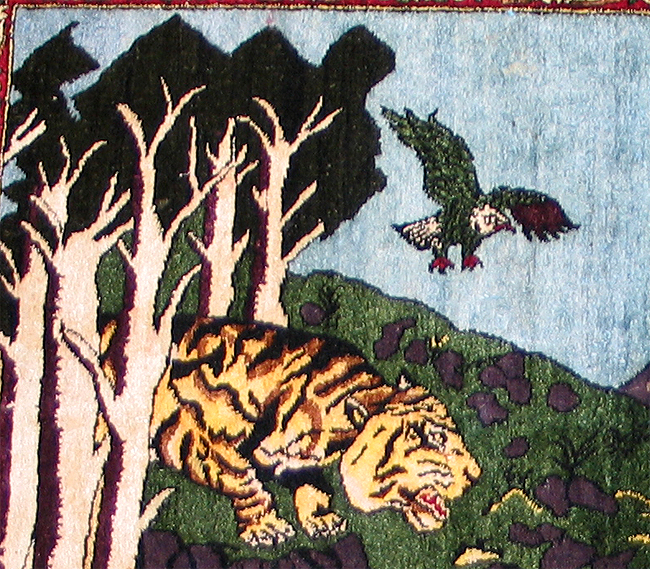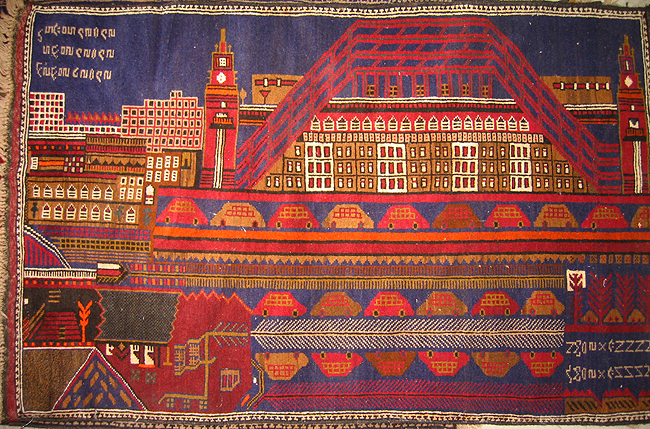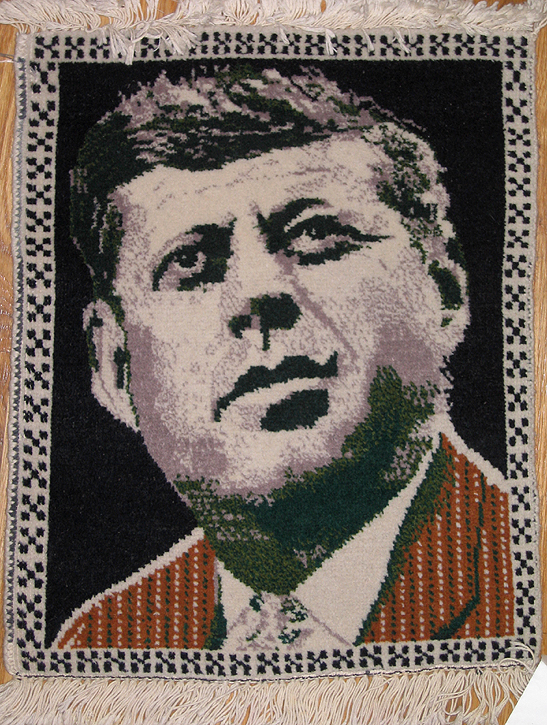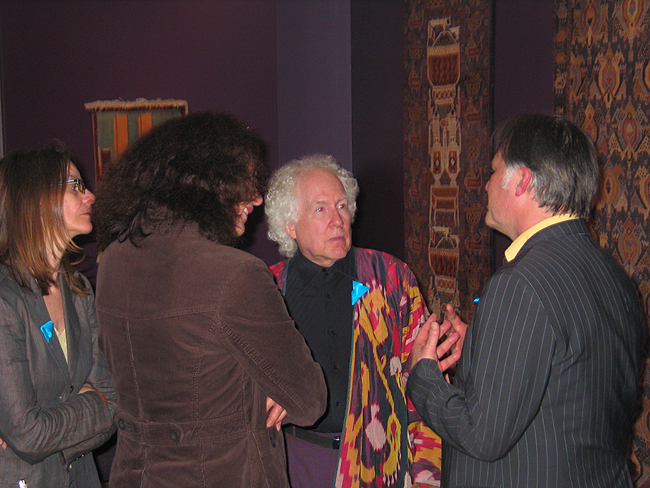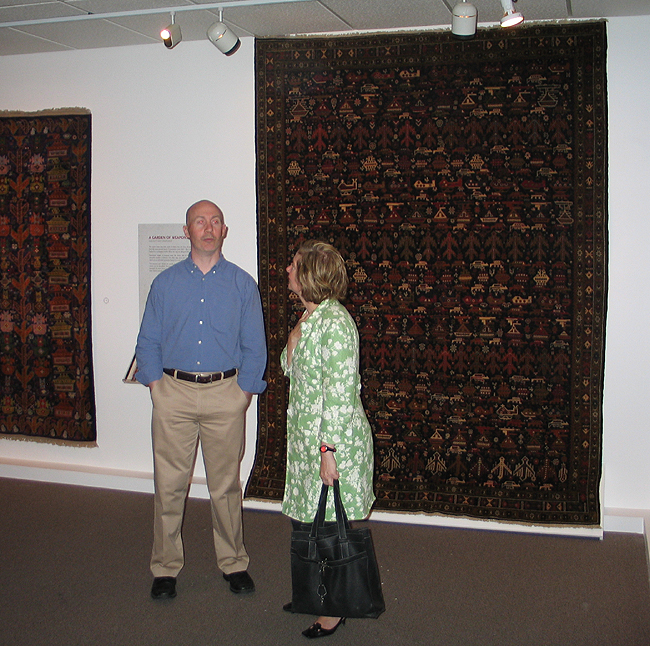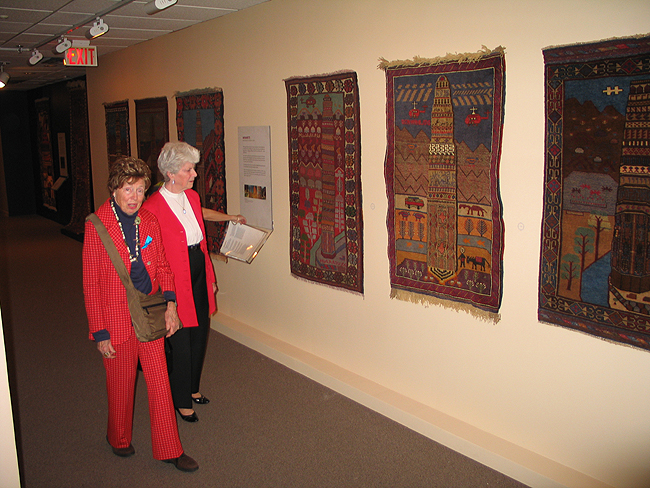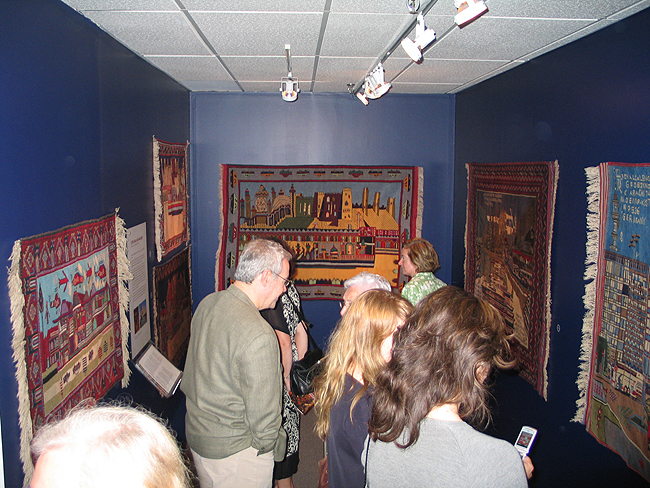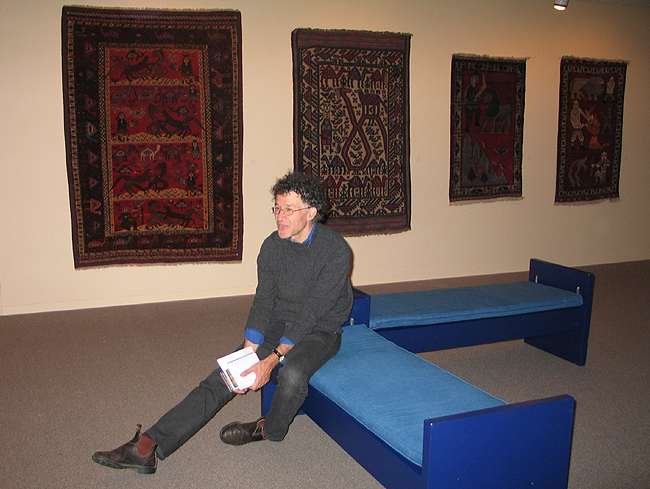The Globe and Mail is running a story today about Ritchies’ sale of war rugs (previous post). The story focuses on World Trade Center rugs. Without understanding the context of World Trade Center rugs it is easy to mistake their intent.
It is important to remember that during the 1990’s Turkmen weavers were ethnically cleansed from northern Afghanistan by the Taliban. These persecuted Turkmen sought the uncomfortable refuge of Pakistan’s refugee camps. In the camps, these Turkmen wove, amongst other things, Soviet Exodus Rugs of several styles. Soviet Exodus grew out of Turkmen map rugs from the 1980’s rugs. Soviet Exodus rugs in turn were a direct antecedent to the small Tora Bora rugs , like these, these, and these, as well as World Trade Center rugs like these , and these. (Please see photos below for more clear pictorial demonstration.)
In short, the Turkmen weavers (who make WTC rugs) were sincerely happy to get out of Pakistan and return to their traditional homes (since the Bolshevik revolution – story for another post) in Afghanistan. They understood that their return would not have bee possible without the American invasion provoked by the September 11 attacks. World Trade Center rugs convey the unity between the Afghan Turkmen and America / ISAF to forge the new Afghanistan.
During the intervening years since 2001, the Turkmen region in northern Afghanistan is one particularly successful, bright, and under reported, region in America’s two wars. The Turkmen region between Kunduz and Aqcha (where WTC rugs originate) is (by Afghan standards) secure, peaceful, and prosperous. Unlike other weaving areas of Afghanistan where the war is currently roiling, the Turkmen region is peaceful and secure. This region has poached much of the carpet production from Taliban infested western Pakistan. There is significant infrastructure development particularly in transportation and telephony. The Turkmen area in Northern Afghanistan is a significant success for America/ISAF in Afghanistan.
The safety and security of this region is illustrated by an Afghan friend of mine who was traveling the road from Herat to Kunduz recently. As he approached Aqcha he was stopped by soldiers at a roadblock. “This road you couldn’t have crossed with a tank 10 years ago”. My friend was traveling in a small car whose trunk was literally loaded with bales of cash for purchasing carpets. The soldiers searched his car, found the obvious load of cash, and bid him on his way unmolested.
Here is a pictorial history of Turkmen map rugs from the 1980’s through the present.
1980’s:
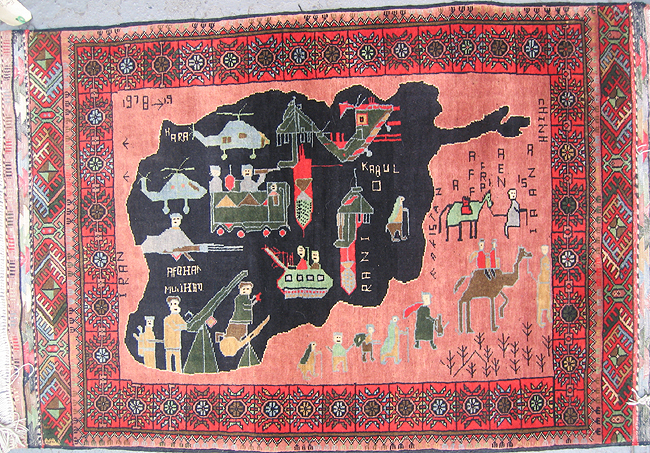
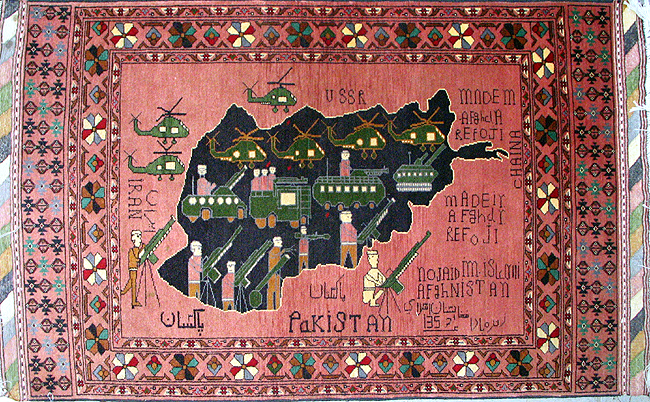
1990’s Soviet Exodus:
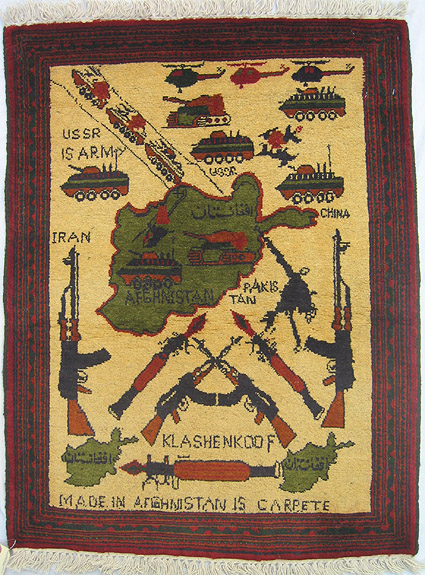
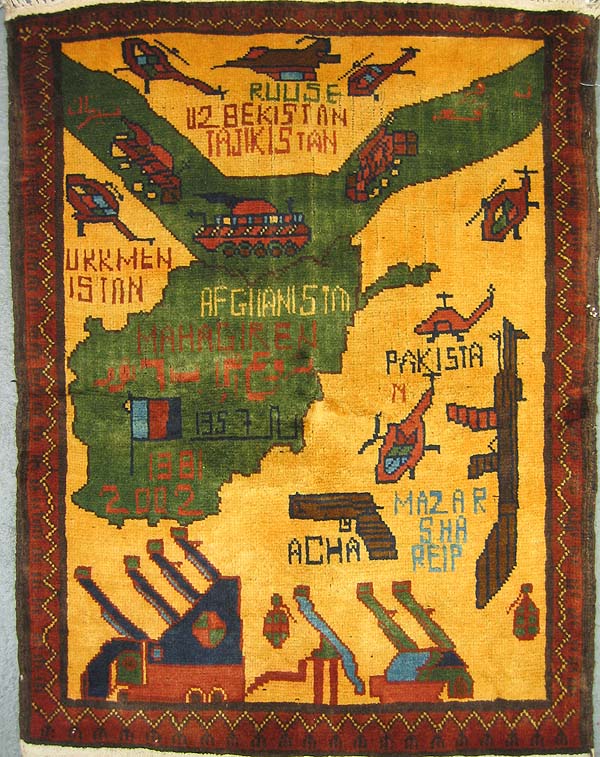
Turkmen weavers back in Afghanistan after 2001:
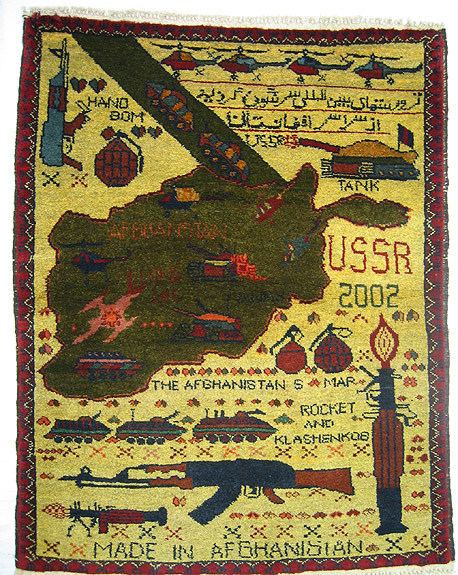
Tora Bora Rugs:
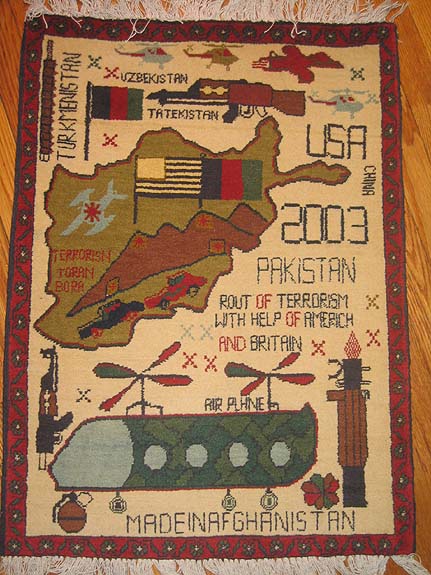
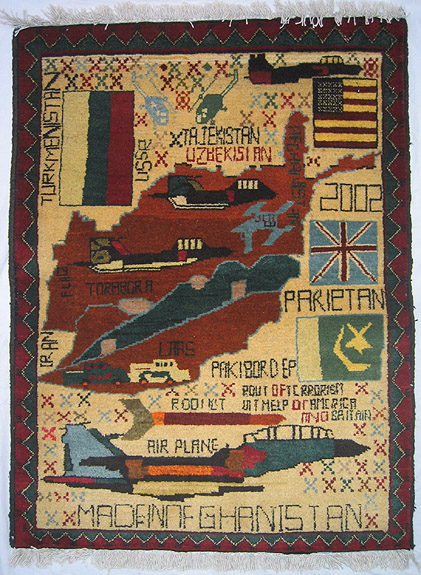
And, three styles of World Trade Center Rugs (2002 examples)
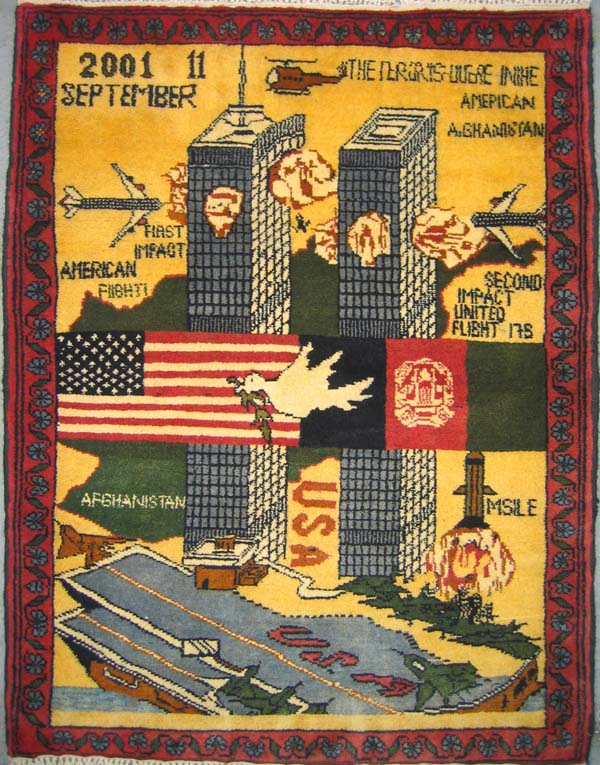

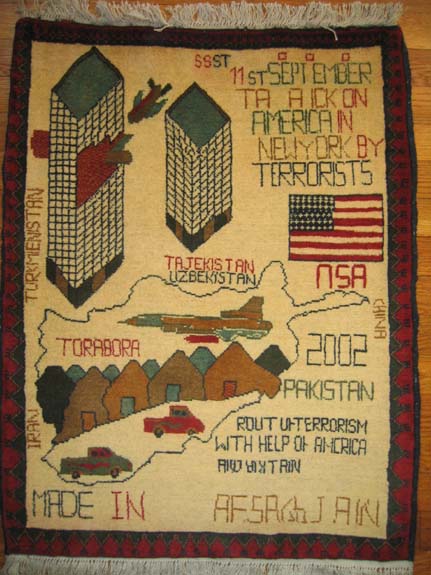
Link to Colin Freeze Globe and Mail story
Comments about story
